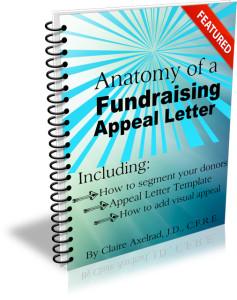I decided to write this post due to the number of times nonprofits ask me “How often should we mail to our donors?” The corollary question is “How often can we ask people to give?”
The answer?
Well… if there was one quick answer I wouldn’t have needed to write a whole article. I’d just have given you a headline with a definitive response!
I know you want a definite answer.
And I could give you one. But it wouldn’t be the truth. Because the truth is different for every nonprofit. And the truth will even be different for your nonprofit at different points in your life cycle.
There are two definitive things I can tell you:
- You are not your donors, and
- Your donors lie.
You are not your donors.
Have you ever written a fundraising appeal “by the book,” only to have your Executive Director or your Board President tell you they would never respond to it?
I hope you know by now — when it comes to crafting your direct mail appeal, whatever you hate is probably exactly the right thing to send to your donor prospects.
- Because your donors don’t live and breathe your cause the way you do.
- Because your donors don’t speak in jargon the way you do.
- Because your donors need to be sold on things you already believe.
- Because your donors have a lot of causes competing for their attention, and you aren’t already at the top of their list.
Have you ever had your board urge you to change your branding or advertising because they’re “tired” of it?
I hope you know by now — your target audiences tire of things far less quickly than do you.
- Because, again, your donors don’t live and breathe your cause.
- Because your donors don’t see your brand or your ads every minute of every day.
Your donors lie.
Sometimes organizations will survey their donors and ask them how often they’d like to be approached. Most people will predictably say once a year. This is a great way to lose your donors. Why?
- Because how people say they’ll behave is often quite different from the way they’ll actually behave.
- Because research in psychology and neuroscience shows people are more likely to give again when they hear from you repeatedly about (1) the impact of their giving, and (2) your gratitude for making this outcome possible .
TRUE STORY: Years ago there was a famous door-to-door study where survey researchers knocked on people’s doors and asked them what magazines they read. Wanting to look “smart” people answered with things like “Time” and “Life” and “The New Yorker.” Then researchers looked in their trash cans. They found all sorts of “junk” and “gossip” literature that none of the respondents mentioned.
How to Determine How Often to Mail
The only way you can determine how your donors will behave is to experience it. And this means testing. Take a look at tests done by other organizations as a starting point. You’ll find a rich treasure trove on the NextAfter website. We do know that large organizations who’ve done this testing are now mailing appeals monthly, with 3 – 4 emails in between. Is this right for you? The only way to know is to try mailing a bit more than you’ve been doing thus far, and see what happens.
Consider this: Donors who give to large organizations are often the very same prospects you are hoping to reach. They are used to hearing from the nonprofits they support on a consistent basis. So how are you going to compete for their attention?
- Remember, you can always offer folks the option of unsubscribing from your mailings. When you comply with this request, you score points for doing what you say you’ll do. This builds trust. And the reality is that very few will decide to unsubscribe.
- People may not read every mailing you send, but this doesn’t mean they don’t like receiving them. In a way, it reassures them you’re still a healthy, vibrant organization that’s out there in the community doing good things.
- If you stop mailing (or mail infrequently), people are left to draw their own conclusions.
The Best Time to Mail Again is Right Away
One of the greatest predictors of giving is recency.
I’ve found the first 90 days to be critical, before the warm glow of giving has faded. You have a better likelihood of receiving a second gift if you ask then, rather than waiting a full year to ask again. If a donor doesn’t hear from you, it really does become a case of “out of sight, out of mind.” This holds particularly true with first-time donors, so don’t fall into the trap of thinking it’s best not to “bother” them. Donors who make their first gift are testing you. They’re waiting to see how much you value their support and whether you’ll deliver on your ‘promise’ to make effective use of their gift. They need to be reassured, right away, they made a good decision.
TRUE STORY: When I worked as director of development for a large social services agency, the E.D. and board didn’t want me to ask people to give more than once a year. When I persuaded them to add a mailing, they said I could mail only to folks who hadn’t responded to the first appeal. I did this dutifully for two years. In the third year, a mistake was made and our full mailing list (current donors included) was inadvertently sent to the mail house. The results? We received three times as many gifts from current donors as we did from non-donors. We’d been missing out on this generous outpouring of support all these years! After that, we not only mailed this appeal to everyone, we added new mailings. Donations increased. Best mistake I ever made!
What, How and Who you Mail to Matters
In fact, it matters as much, or more, than how often you mail. Instead of trying to find excuses to communicate with folks less, how about finding ways to communicate more effectively?
Many times when people ask me how often they should mail and ask for donations they’re really asking why they aren’t raising more money. Are they offending folks by sending too many mailings? Are they pussyfooting around by not sending enough? Often, those are the wrong questions.
Because as soon as I take a look at their appeal language… or as soon as I ask them who is on their mailing list… or as soon as I ask them what other communication channels they are using to leverage greater support… or as soon as I take a look at the types of messaging they are pushing out… I can tell why they aren’t generating larger returns.
-
If your mailings are institution-centered (all about you and how great you are) you’re not going to achieve the results you’ll get if you make your appeal donor-centered (all about your donor and how they can be a hero by investing with your cause).
-
If your mailings are generic, and you’re not using segmentation to send the most personal, relevant appeals possible, then your appeal is not going to be as engaging as it needs to be.
-
If you’re sending snail mail to people whose primary means of communication is email or social media you’re not maximizing your chances for success. Especially if you’re targeting younger donors, an approach through social media using peer influence may work better.
-
If you don’t have the right people on your mailing list, you’re not going to have great chances to achieve your desired results. I’ve seen many wonderful fundraising appeals fail for want of a good mailing list.
Practical Advice for Mailings
More is usually more. Provided you’re offering up content that’s relevant, useful, hopeful and inspiring.
I like to mail as often as I can afford to do so (taking into account both human and financial resources).
If you make more money with your mailing than it costs you, then why not?
If you think you should be netting an even larger profit, then it’s time to take a look at what you’re mailing, who you’re mailing to and how you’re getting your message across.
- Quarterly appeal mailings (not including newsletters) is just about the minimum I’d recommend for any nonprofit if you want to stay top-of-mind.
- One or two emails monthly is certainly not out of bounds. As you expand services and need to raise more money, expanding the number of mailings you send makes a lot of sense.
- Layering on social media to reinforce the message in your mailing is generally a good idea. Have you ever heard the maxim that someone needs to see an ad seven times before it sticks? In our digitally revolutionized world, I’ve heard marketers say this number has increased to about 21 times!
Don’t just take my word for it. Here’s what Erica Waasdorp of A Direct Solution has to say:
“I recommend at least four appeals per year with direct mail, at least one email per month, and then of course once you have email, you can do as much as you like on social media. For email, I like to see at least one email newsletter a month, and then one appeal a month; one story with a specific ask, but every organization is different. But you can do a lot more. I worked with an organization that mailed 15 times a year, and they make money every time.”
The Point of Your Mail Appeals
Remember, fundraising is not about money. Fundraising simply serves your end goal, making it possible to finance the programs and services upon which your community relies. Fundraising is your reward for being successful. For making a difference. Because if that’s the outcome your organization creates, then you’ve earned the right to raise funds. In fact, you have a responsibility to do so. If not, you’ll let your constituents (who rely on you) down.
Stop thinking of your appeals as begging.
Do you feel joy when you give to your cause? If so, start thinking of your appeals as announcements of opportunities to share your joy. As opportunities to share in your remarkable cause. Then turn your announcements into offers people simply cannot refuse!
There’s No One Right Way to Fundraise
At the top of this article I told you flat out there is no right answer to the question “How often should we mail?” What works for one organization may not work for another. The only way to know for sure what works for your audience is to try different things and let the numbers make the decision for you.
I’ve offered some guidelines as a place to begin. That’s all they are, not hard and fast rules. Use your brain. If there’s a big news event related to your issue, you may want to mail every day while that issue is at the forefront of your donors’ minds. Then you’ll want to take a little rest. But, overall, your plan should be:
- To stay top of mind.
- To focus on your donor, not your organization.
- To ask — and then ye shall receive.
Want to learn to create remarkable appeals?

This 62-page guide will take your appeal letter from run of the mill to out of the ballpark!
Grab my Anatomy of a Fundraising Appeal + Sample Template. It’s a simple, step-by-step guide to crafting a killer appeal letter.
Use it all year-round to create spectacular fundraising offers your donors won’t be able to refuse.
Not happy? No worries. All Clairification materials come with a 30-day, no-questions-asked, 100% refund guarantee.






